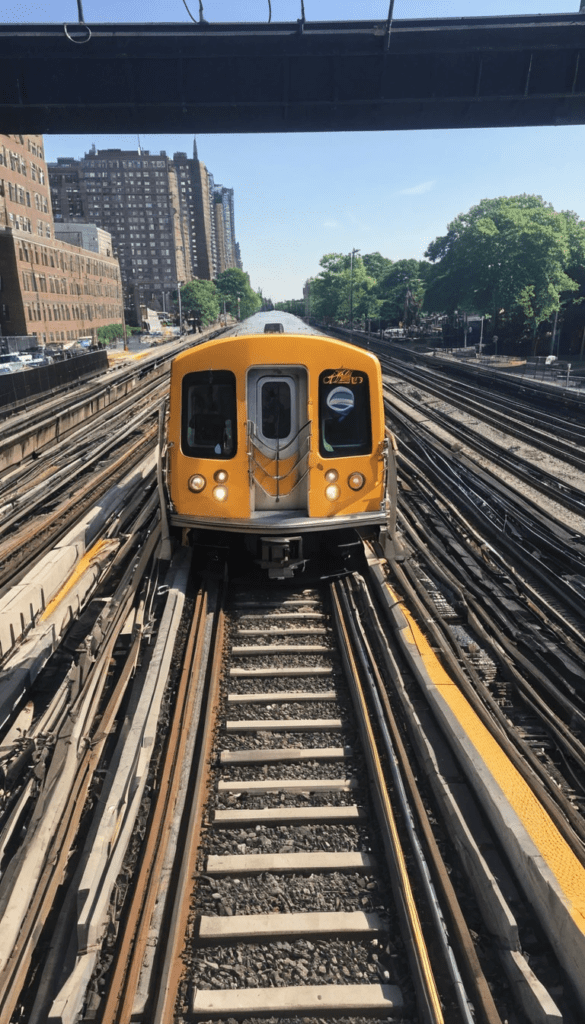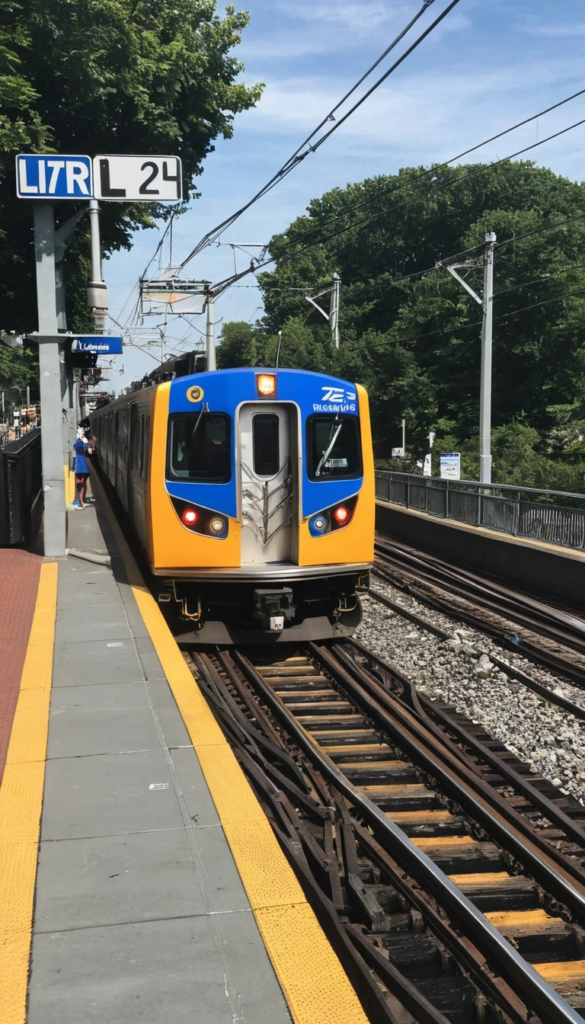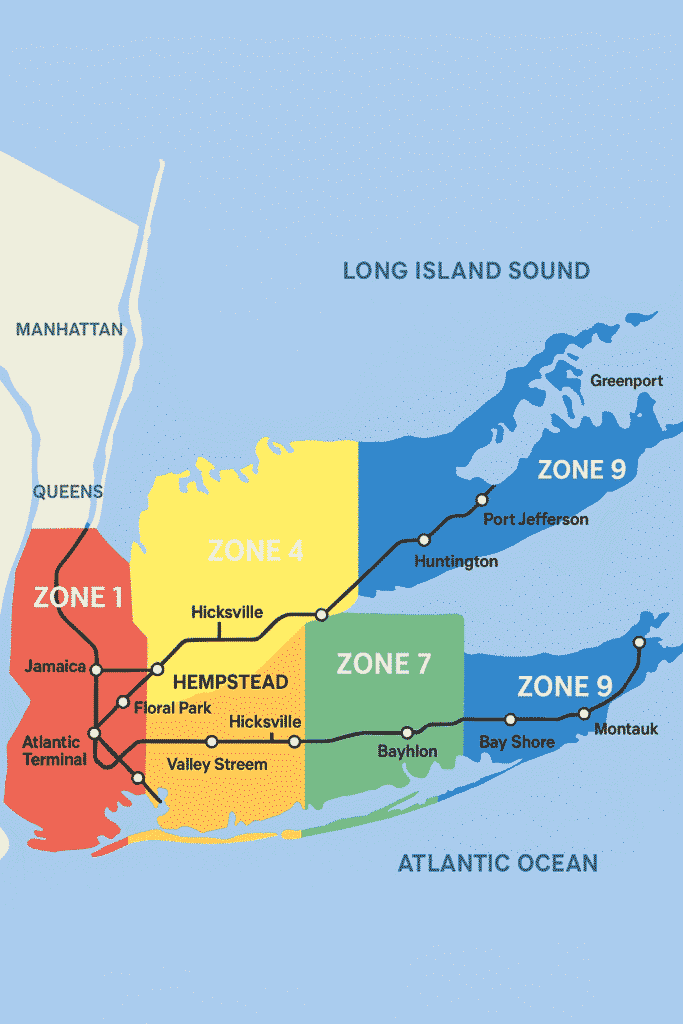LIRR Zones—When traveling across the Long Island Rail Road network (LIRR), a zone system determines fare prices by the distance traveled. The system splits the LIRR into numbered zones, with Zone 1 encompassing major New York City terminals, such as Penn Station and Grand Central, before higher-numbered zones reach Long Island. The further a passenger travels between zones, the more expensive the fare.

Monthlies, weeklies, and one-ways are based on the zones you combine. Commuters use LIRR zones to plan their daily or occasional travels, pay for passes, and calculate the fare to get to their destination, to provide cost-effective solutions.
LIRR Zones

Fares are determined by the distance traveled, and the LIRR is split into five fare zones. Stations belong to a fare zone, and fares are calculated by the number of zones crossed. The LIRR has eight fare zones, which are numbered non-consecutively. Here is a detailed description of these zones and their associated stations.
Zone 1: City Terminal Zone
Stations:
- Penn Station (Manhattan)
- Grand Central (Manhattan)
- Atlantic Terminal (Brooklyn)
- Long Island City (Queens)
- Hunters Point Avenue (Queens)
- Nostrand Avenue (Brooklyn)
- East New York (Brooklyn)
- Woodside (Queens)
- Forest Hills (Queens)
- Kew Gardens (Queens)
- Mets-Willets Point (Queens)
Zone 3: Eastern Queens
Stations:
- Jamaica
- Locust Manor
- Laurelton
- Rosedale
- St. Albans
- Hollis
- Queens Village
- Flushing-Main Street
- Murray Hill
- Auburndale
- Bayside
- Douglaston
- Little Neck
Zone 4: Nassau County and Select Queens Stations
Stations:
- Gibson
- Hewlett
- Woodmere
- Cedarhurst
- Lawrence
- Inwood
- Far Rockaway
- Lynbrook
- Valley Stream
- Westwood
- Malverne
- Lakeview
- Hempstead Gardens
- West Hempstead
- Elmont-UBS Arena
- Belmont Park
- Bellerose
- Stewart Manor
- Nassau Boulevard
- Garden City
- Country Life Press
- Hempstead
- Floral Park
- New Hyde Park
- Merillon Avenue
- Mineola
- East Williston
- Great Neck
- Manhasset
- Plandome
- Port Washington
Zone 7: Nassau County
Stations:
- Centre Avenue
- East Rockaway
- Oceanside
- Island Park
- Long Beach
- Rockville Centre
- Baldwin
- Freeport
- Merrick
- Bellmore
- Wantagh
- Seaford
- Massapequa
- Massapequa Park
- Amityville
- Copiague
- Lindenhurst
- Pinelawn
- Bethpage
- Farmingdale
- Hicksville
- Carle Place
- Westbury
- Oyster Bay
- Locust Valley
- Glen Cove
- Glen Street
- Sea Cliff
- Glen Head
- Greenvale
- Roslyn
- Albertson
Zone 9: Western Suffolk County (Continued)
Stations:
- Bay Shore
- Brentwood
- Central Islip
- Deer Park
- East Islip
- Islip
- Great River
- Lindenhurst
- Northport
- Oakdale
- Ronkonkoma
- Sayville
- Smithtown
- St. James
- Wyandanch
Zone 10: Mid-Suffolk County
Stations:
- Bellport
- Medford
- Patchogue
- Riverhead
- Yaphank
- Westhampton
Zone 12: Eastern Suffolk County
Stations:
- Bridgehampton
- East Hampton
- Hampton Bays
- Montauk
- Southold
- Southampton
How LIRR Zones Work
- The price of your ticket depends on the number of zones you travel in.
- Travel within the same zone is the least expensive, and crossing multiple zones will increase the fare.
- City Terminal Zone (Zone 1) has its own fare structure, as it connects to Manhattan.
- Fares are subject to Peak and Off-Peak pricing, with surcharges on weekday morning and evening peak periods.
Monthly LIRR Ticket Zone 4
A Monthly Ticket for travel between Zone 1 (approximately Penn Station) and Zone 4 (approximately Mineola) on the Long Island Rail Road (LIRR) is $253.00.
Valid for unlimited rides in these zones for a whole calendar month (parejo), this ticket is ideal for people who use the metro daily.
All Zone Time Table
| Branch | Fare Zones Covered | Schedule Link |
| Babylon Branch | Zones 7, 9 | |
| Far Rockaway Branch | Zones 3, 4 | |
| Hempstead Branch | Zones 3, 4 | |
| Long Beach Branch | Zones 3, 7 | |
| Montauk Branch | Zones 9, 10, 12, 14 | |
| Oyster Bay Branch | Zones 4, 7, 9 | |
| Port Jefferson Branch | Zones 4, 7, 9 | |
| Port Washington Branch | Zones 3, 4 | |
| Ronkonkoma Branch | Zones 7, 9, 10 | |
| West Hempstead Branch | Zones 4, 7 | |
| City Terminal Zone | Zone 1 |
LIRR Fare Zones
The LIRR divides its entire system into Fare Zones numbered from Zone 1 to Zone 14. The higher the zone number, the farther it is from Penn Station (Zone 1) in Manhattan. Fares increase depending on:
-
The number of zones traveled between your origin and destination
-
Whether you’re traveling during peak or off-peak hours
-
If it’s a one-way, round-trip, or monthly/weekly pass
| Travel Type | Fare Factors |
|---|---|
| Peak | Weekdays before 10:00 AM and between 4:00 PM–8:00 PM |
| Off-Peak | All other times, including weekends |
| CityTicket | Discounted travel within NYC (Zone 1–3 only) on off-peak |
| Monthly/Weekly | Best for regular commuters; price varies by zones crossed |
List of LIRR Fare Zones
| Zone | Area Covered | Example Stations |
|---|---|---|
| 1 | Manhattan | Penn Station |
| 2 | Queens (Western) | Woodside |
| 3 | Queens (Eastern) | Jamaica, Forest Hills, Kew Gardens |
| 4 | Nassau (Western) | Floral Park, Valley Stream |
| 5 | Nassau (Central) | Mineola, Garden City |
| 6 | Nassau (Eastern) | Hicksville, Wantagh |
| 7 | Suffolk (Western) | Farmingdale, Babylon |
| 8 | Suffolk (Central) | Ronkonkoma, Patchogue |
| 9 | Suffolk (Eastern) | Riverhead |
| 10 | Suffolk (Far East) | Greenport |
| 12 | Montauk Branch (South Fork, seasonal) | Montauk, East Hampton, Amagansett |
| 14 | Port Jefferson Branch (Far East) | Port Jefferson |
LIRR Fare Increases [Applicable from January 2026]
| LIRR Zone | Current Monthly Fares | Proposed Fares | Change |
|---|---|---|---|
| 1 | $165.00 | $172.50 | $7.50 |
| 3 | $198.00 | $207.00 | $9.00 |
| 4 | $253.00 | $264.25 | $11.25 |
| 7 | $287.00 | $299.75 | $12.75 |
| 9 | $341.00 | $356.50 | $15.50 |
| 10 | $378.00 | $394.50 | $16.50 |
| 12 | $433.00 | $452.00 | $19.00 |
| 14 | $468.00 | $487.75 | $19.75 |
How to Identify Your Travel LIRR Zone
- Look up Your Station – Every LIRR station falls within a fare zone, which ranges from Zone 1 (the NYC terminals) through Zone 14.
- Refer to the LIRR Fare Zone Map – found on the MTA site and in stations. This map displays each station with its respective zone.
- Check Your Ticket – If you have recently purchased a ticket, the zone number appears on it, indicating what zones the trip will be made between.
- Inquire Inside at the Ticket Office or Machine – Ticket machines and station agents can also verify your correct zone before purchase.
- Online Trip Planner -The MTA website will figure out your zone and fare from your trip’s starting point to your destination.
LIRR Zones Map

You May Also Like:
Q. What are LIRR fare zones, and how do they work?
A. The LIRR rent area determines ticket prices depending on the distance between the origin and the destination. The system has a zone count of 1 through 14.
Q. How can I find out which zone my station is in?
A. You can check the complete list of stations and the MTA website for their respective fields, or the Tantime App.
Q. Does my ticket price change if I cross into a different zone?
A. Yes, the ticket prices travel through the zone as soon as the prices rise.
Q. Are monthly or weekly tickets based on LIRR zones?
A. Yes, the price of monthly and weekly passes is based on the areas between your origin and destination.
Q. Can I use a lower-zone ticket to travel to a higher zone?
A. No, travel beyond your ticket area requires an upgrade or a new ticket.
Q. Does traveling within the same LIRR zone cost less?
Yes. Trips within the same zone or short-distance zones are usually cheaper compared to cross-zone travel.
